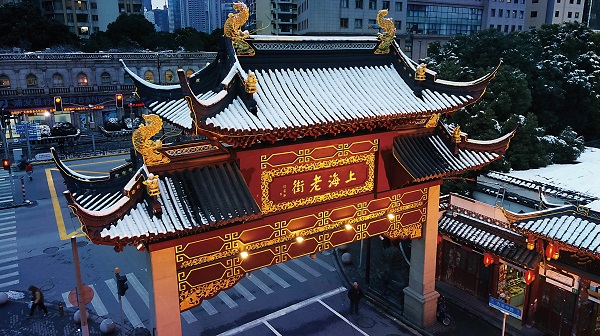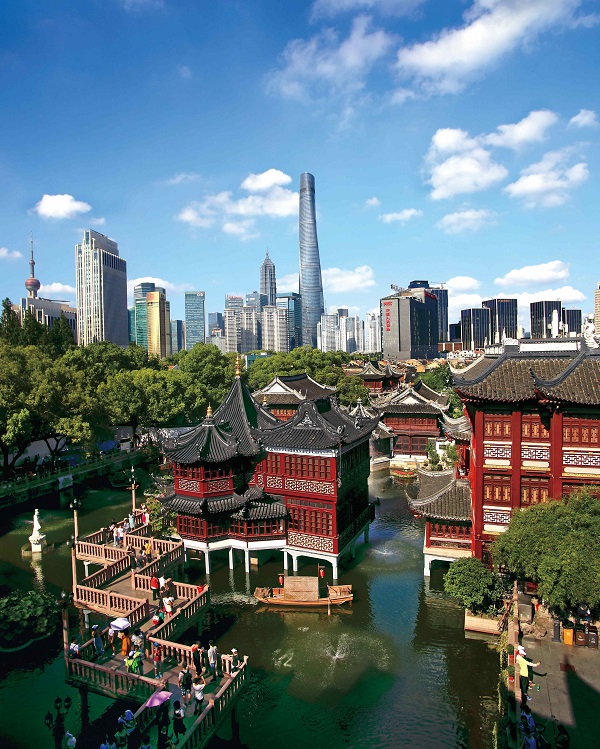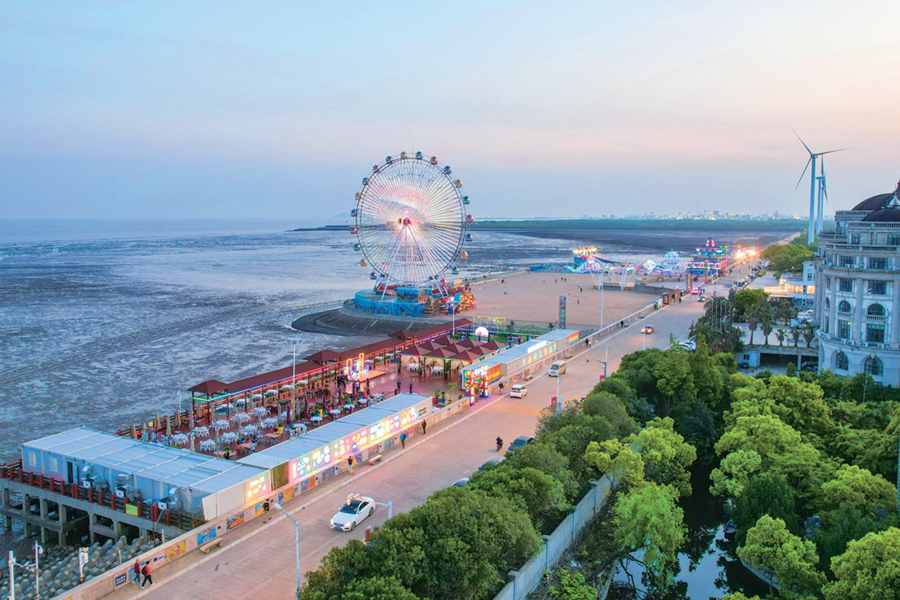Laochengxiang Historical and Cultural Block
Nestled in the heart of Shanghai, Laochengxiang is the oldest residential area in the city's Huangpu district and stands as a testament to its rich, vibrant past.

Shanghai Old Street. [Photo/article.xuexi.cn]
This sprawling area encompasses 199.72 hectares within Renmin Road and Zhonghua Road.
The seeds of Laochengxiang were sown as early as the Northern Song Dynasty (960-1127), evidenced by the presence of settlements and official institutions.
The subsequent Southern Song Dynasty (1127-1279) witnessed the area's formation, culminating in the establishment of Shanghai county in 1291. This marked a turning point as Shanghai emerged as the region's political, economic, and cultural epicenter.
The Ming Dynasty (1368-1644) saw a pivotal moment in the city's history when the Japanese invasion spurred the construction of a protective city wall. Characters in its name cheng xiang reflect the history and character of a city divided into two distinct areas: the protected "cheng" within the city walls and the bustling market "xiang" beyond them.
However, the dawn of a new era arrived with the opening of Shanghai to the outside world. The city wall, once a symbol of defense, transformed into an obstacle to modernization. Following the Xinhai Revolution launched by Sun Yat-sen in 1911, it was dismantled, paving the way for a unified urban landscape.
A thriving center of commerce and culture
Shanghai's location, where the Yangtze River flows into the sea, proved to be a catalyst for burgeoning economic activity. The Yuan Dynasty (1271-1368) witnessed the rise of the sand boat industry and the strategic transportation of grain by sea, fostering vital trade routes connecting north and south.
During this period, distinctive guild halls emerged in Laochengxiang, established to foster camaraderie and industry collaboration in the area.
Education, too, flourished in the area. From the town school set up in the Song Dynasty to the renowned academies of the Ming and Qing dynasties (1368-1911), Laochengxiang nurtured a tradition of scholarship and intellectual pursuit. These institutions facilitated the spread of literacy and helped shape the city's intellectual landscape.

Wenmiao, or the Shanghai Confucian Temple, was the highest school in Shanghai in ancient times. It is the only temple in Shanghai's urban area where Confucius is worshipped. [Photo/article.xuexi.cn]
Treasures of architectural and artistic heritage
Laochengxiang boasts a treasure trove of cultural and architectural sites that captivate visitors from around the world. Exquisite private gardens, including the renowned Yuyuan Garden and the Aroma Garden, showcase the artistry of traditional Chinese landscape design.

Yuyuan Garden. [Photo/article.xuexi.cn]
Temples such as the Cheng Huang Miao (City God Temple) and the Bai Yun Guan (White Cloud Temple) offer stunning examples of intricate architecture and masterful Buddhist sculptures.

Cheng Huang Miao (City God Temple). [Photo/article.xuexi.cn]
Historic mansions like the Shu Yin Lou and the Jiu Jian Lou stand as elegant remnants of the Ming and Qing dynasties while restored structures like the Chenxiang Pavilion, Dajing Pavilion, and the north gate section of the old city wall offer a tangible connection to the area's past.

Dajing Pavilion. [Photo/article.xuexi.cn]
The evolution of Laochengxiang mirrors the development of Shanghai and China as a whole. Successive governments have recognized its cultural significance, undertaking efforts to preserve its heritage.
(Updated on Aug 27, 2025)
Sources: article.xuexi.cn, shtong.gov.cn
Editor's Pick
FAQs
- What if my passport expires but my Chinese visa is still valid?
- Can pets and owners depart from different countries while complying with customs regulations?
- Can a minor travel to China and stay in a hotel without a parent's presence?
- Who is eligible for the 240-hour visa-free transit policy in China?

